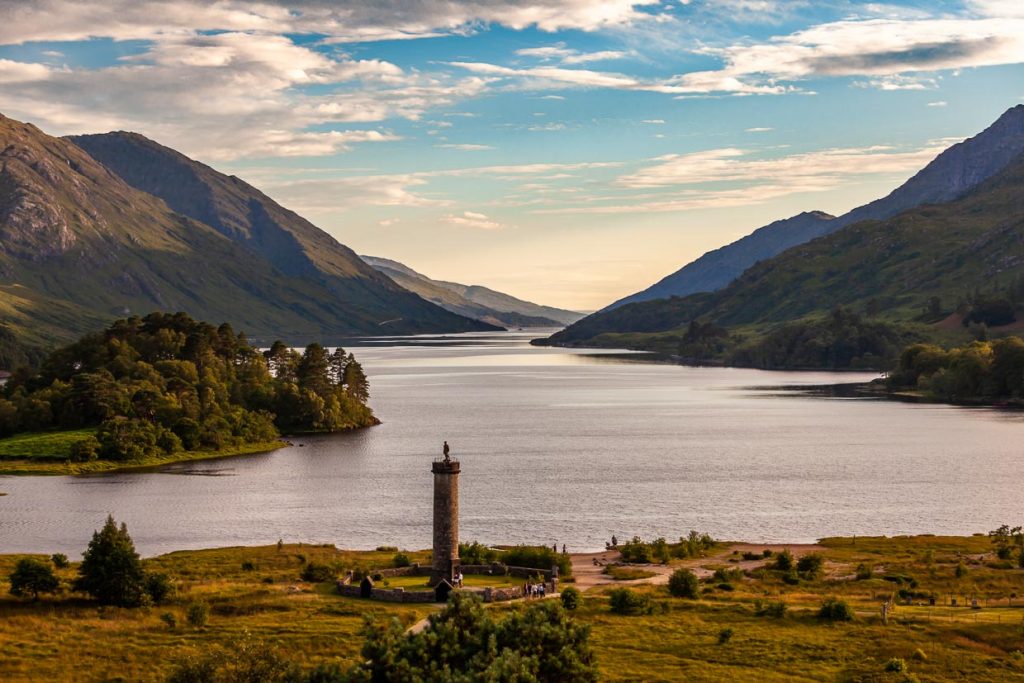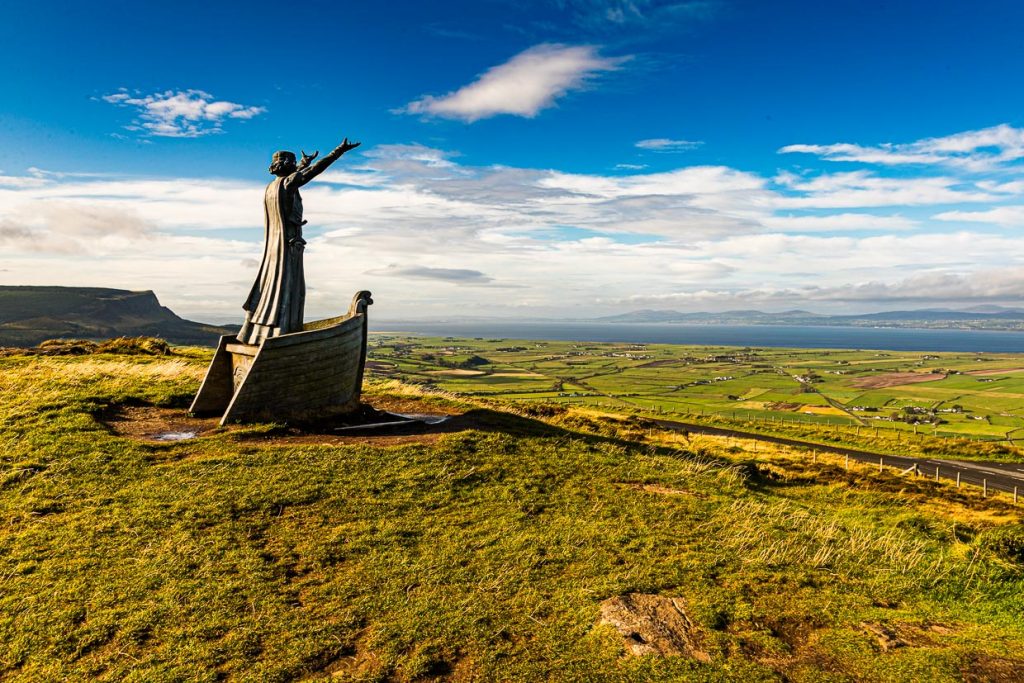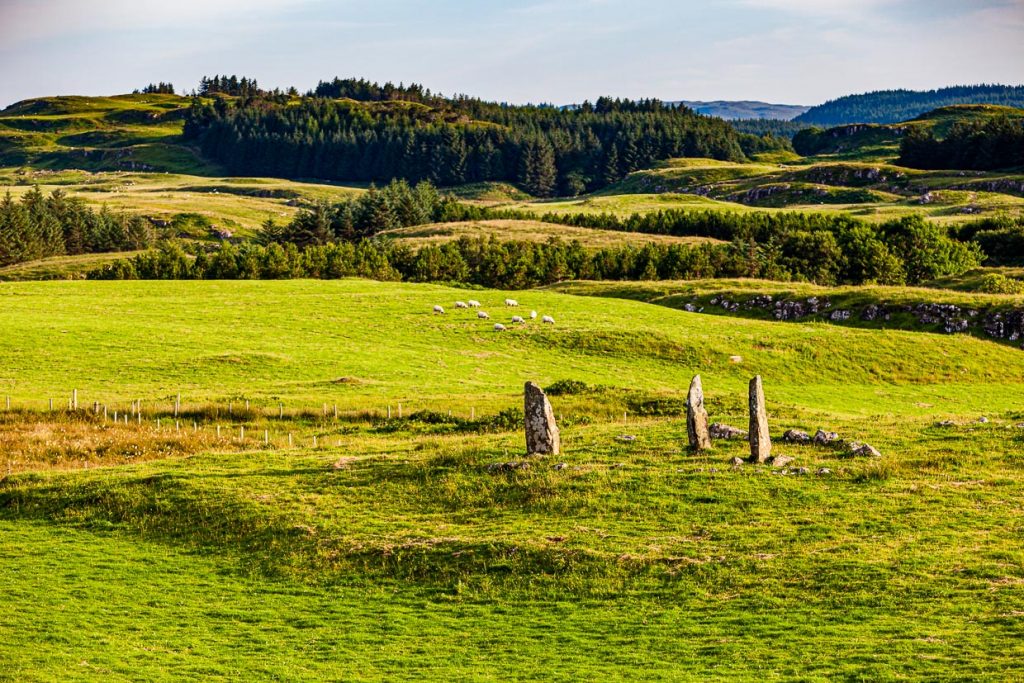In the countryside, the perception of monuments is different. If a monument lies on a hill, stands on a cliff, at the end of a lake or in the middle of a sheep pasture, the opposite often happens. One does not walk by, but is literally drawn to these memorial posts. Even from a distance, they seem like a special place not to be missed.
Monument with attraction
Of course, we walk to the top of Logh Shiel to see the monument honoring Bonnie Prince Charly up close. No matter, even though we’ve already walked 18 kilometers through the scorching heat of an atypical Scottish summer day. The place where the last hope of the Scottish clans for a king from the House of Stewart on the throne of England, called the rebellion, we can not leave left.

The sea god Manannan Mac Lir spreads his arms and we interrupt the ride, even though it is cold and windy. Gortmore is a stunning viewpoint on the Bishop’s Road in Northern Ireland and is part of the Causeway Coastal Route. On a clear day, you can see all the way to Donegal and the islands of Islay and Jura on the west coast of Scotland. How fortunate that the sea god put a stop to us!


No trip without a monument! For International Monument Day on April 18, we’re taking a foray into the diversity of monuments. Whether you encounter them in the city or in the countryside, what all the world’s monuments have in common is their contribution to education. Without them, we would all return from a trip a little dumber.
- Monument and art – First art, then monument
- Monument and city – High density of monuments
Our work is inspired by human encounters and always culinary discoveries. What format do you need? A newsworthy report, an entertaining reportage, a short travel tip or a picture gallery? At the international photo agency Alamy you will find a large selection of photos by Georg Berg on the subject of monuments and memorials. Clicking on one of the images below will take you directly to the agency image.

